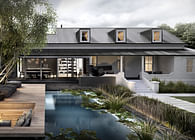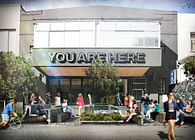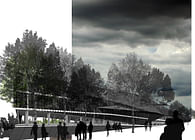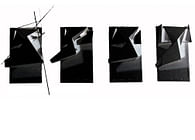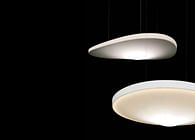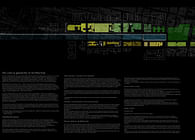
Apple and Education; a public statement by Apple on their social responsibilities towards education and social sustainability “We believe that technology has the power to transform the classroom. It can pave new ways of thinking. New ways of sparking ideas. Yet the foundation never changes: A dedication to learning that’s always been part of our DNA. We’ve been proud to work alongside educators and students to reinvent what it means to teach and learn. And together we’re doing things we never thought possible.”
Introduction:
In an era of rapid change that is enforced through technological innovations, globalization, market expansion and mass production, the focus on the most important asset of an organization, human capital is often forgotten. The change should be focused on people – their intellectual abilities, their fear, their cultural background and their ability to add value to the changing societal needs, thereby working together for the common goal of the country.
Since the 1994 elections, the emphasis has been on the compensation of the inequalities of the past. The South African government formulated a program of restructuring the education system on principles of equity, human rights, democracy and sustainable development. Against this scenario of change, the South African education system still faces major challenges, with political instability at the forefront of education. This is especially true in terms of the tension between implementing changes that need both time and considerable resources to work their way through, and the close relationship of issues that need to be addressed at the sites of implementation i.e. in the schools, universities, universities of technology and particularly, in the lives of human personnel.
│SOCIAL SUSTAINABILITY: PROFESSIONAL DEVELOPMENT. Addressing the challenges of education in South Africa by empowering our educators with technology:
Teachers play a significant role in the upliftment and transformation of our society. They bear the weight and responsibility of teaching, and, apart from parents, are the main source of knowledge and values for children. Yet, little has been done to empower our educators with the latest teaching and learning methods and to combine this knowledge with technology.
Apple however, as part of their sustainability policies, values education and the importance of technology in education. The primary goal of the proposed project is to create a professional development center where educators can learn how to use technology and specialized developed educational applications. It also creates a physical platform and location where government, educators and representative student bodies can converse on the educational curriculum. The development center address the following categories;
The curriculum is subdivided into 6 sub-genres which forms the basis of higher education;
│ENVIRONMENTAL SUSTAINABILITY
1. Sustainable Development theory
Whole Building Design
In buildings, to achieve a truly successful holistic project, these design objectives must be considered in concert with each other:
- Accessible: Pertains to building elements, heights and clearances implemented to address the specific needs of disabled people.
- Aesthetics: Pertains to the physical appearance and image of building elements and spaces as well as the integrated design process.
- Cost-Effective: Pertains to selecting building elements on the basis of life-cycle costs (weighing options during concepts, design development, and value engineering) as well as basic cost estimating and budget control.
- Functional/Operational: Pertains to functional programming—spatial needs and requirements, system performance as well as durability and efficient maintenance of building elements.
- Historic Preservation: Pertains to specific actions within a historic district or affecting a historic building whereby building elements and strategies are classifiable into one of the four approaches: preservation, rehabilitation, restoration, or reconstruction.
- Productive: Pertains to occupants' well-being—physical and psychological comfort—including building elements such as air distribution, lighting, work spaces, systems, and technology.
- Secure/Safe: Pertains to the physical protection of occupants and assets from man-made and natural hazards.
- Sustainable: Pertains to environmental performance of building elements and strategies.
2. Rehabilitation: Natural Draft Cooling Towers
Natural draft wet cooling towers are used to cool water, primarily in energy production. The tower operates on the stack effect which causes the hot air in the tower to rise (natural draft).. The necessary stack can be designed in various ways. For both technical and cost reasons, reinforced concrete structures have become standard to handle the high cooling water flow rates from increasingly large power generating units.
Key features
- The required air stream volume for cooling is exclusively produced by the stack effect.
- The unique economic advantage of natural draft cooling towers lies in their very low electric energy requirement.
- The operating costs are minimal. Economical for high cooling loads and depreciation over a long period.
- The great distance between the air inlet and the air outlet of the cooling tower dependably avoids any recirculation of warm air that could lead to reduced performance.
- The almost complete lack of moving parts allows for high operating reliability and minimal maintenance requirements.
- Because of the height of the warm air outlet point the surrounding area remains untroubled by effects of the cooling system.
Natural Draft Cooling Towers can also be equipped with fans. The fans are installed at the air inlet for forced-draft air movement or on a deck above the fills to induce air flow. While air flow through a natural draft cooling tower is exclusively controlled by the height of the stack and the density difference between the cold and the hot air, the air is accelerated by the fans of a fan-assisted Natural Draft Cooling Tower to reduce the overall height of the structure. Increased air velocity, caused by the installation of fans, allows a compact design.
3. Sustainable: Passive cooling and ventilation:
Method 1: Vegetation
Vegetation modifies the microclimate and the energy use of the buildings by lowering the air and surface temperatures and increasing the relative humidity of the air. Furthermore, the gardens control air pollution, filter the dust and reduce the level of nuisance from noise sources.
Method 2: Water Surfaces
Water surfaces modify the microclimate of the surrounding area, reducing the ambient air temperature, either by evaporation, or by the contact of the hot air with the cooler water surface. Fountains, ponds, streams, waterfalls or mist sprays may be used as cooling sources, for lowering the temperature of the outdoor air and of the air entering the building.
Method 3: Aperture
The appropriate combination of the orientation, size and tilt of the various openings on the building’s envelope is of vital importance. This is because these parameters affect the surface’s view of the sun and sky over the daily and monthly cycles.
Method 4: Buoyancy-driven stack ventilation.
Buoyancy-driven stack ventilation or displacement ventilation (DV) relies on density differences to draw cool, outdoor air in at low ventilation openings and exhausts. A chimney or atrium is frequently used to generate sufficient buoyancy forces to achieve the needed flow. However, even the smallest wind will induce pressure distributions on the building envelope that will also act to drive the airflow.
Status: Competition Entry
Location: Bloemfontein, ZA
My Role: Architect
